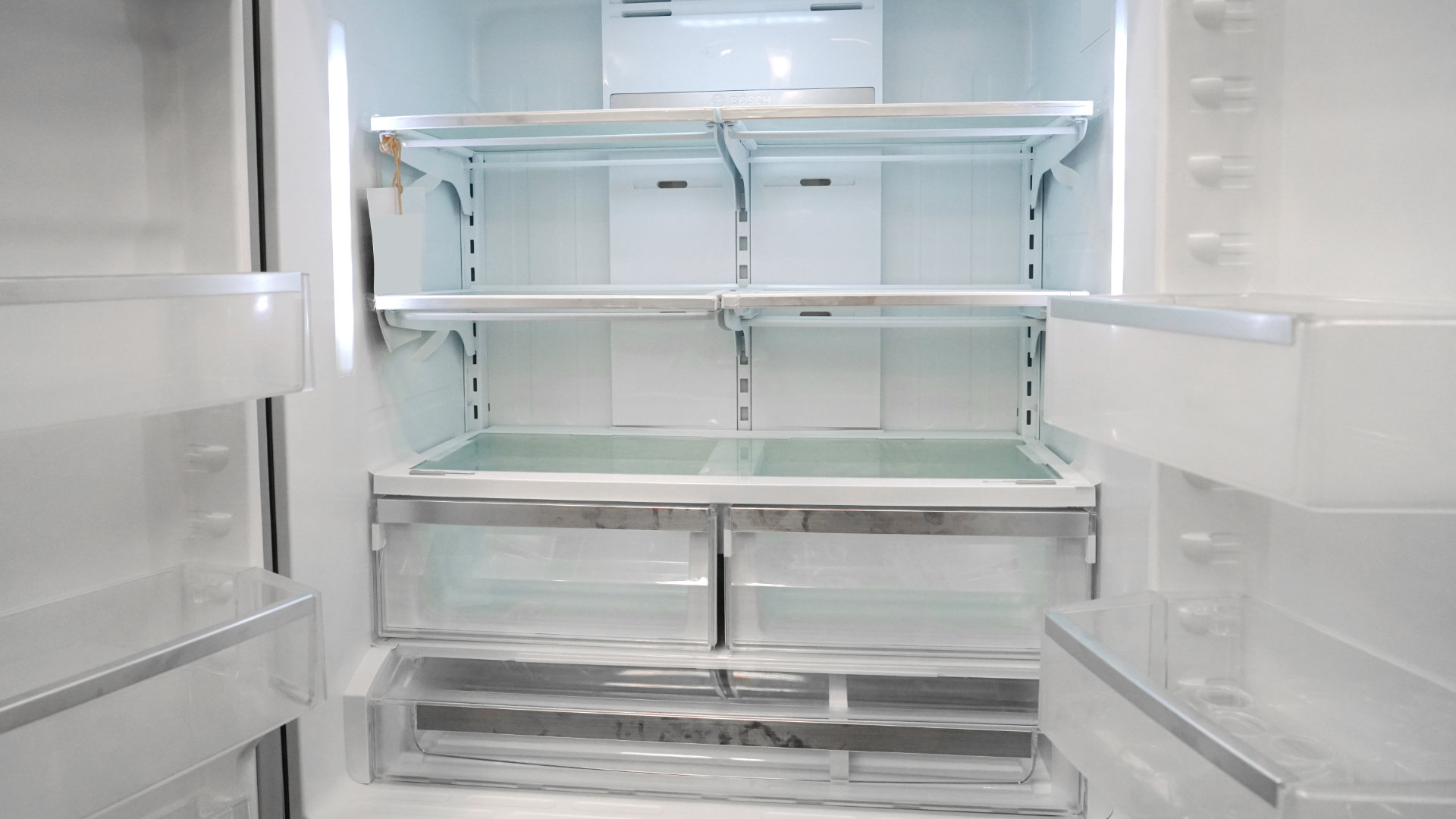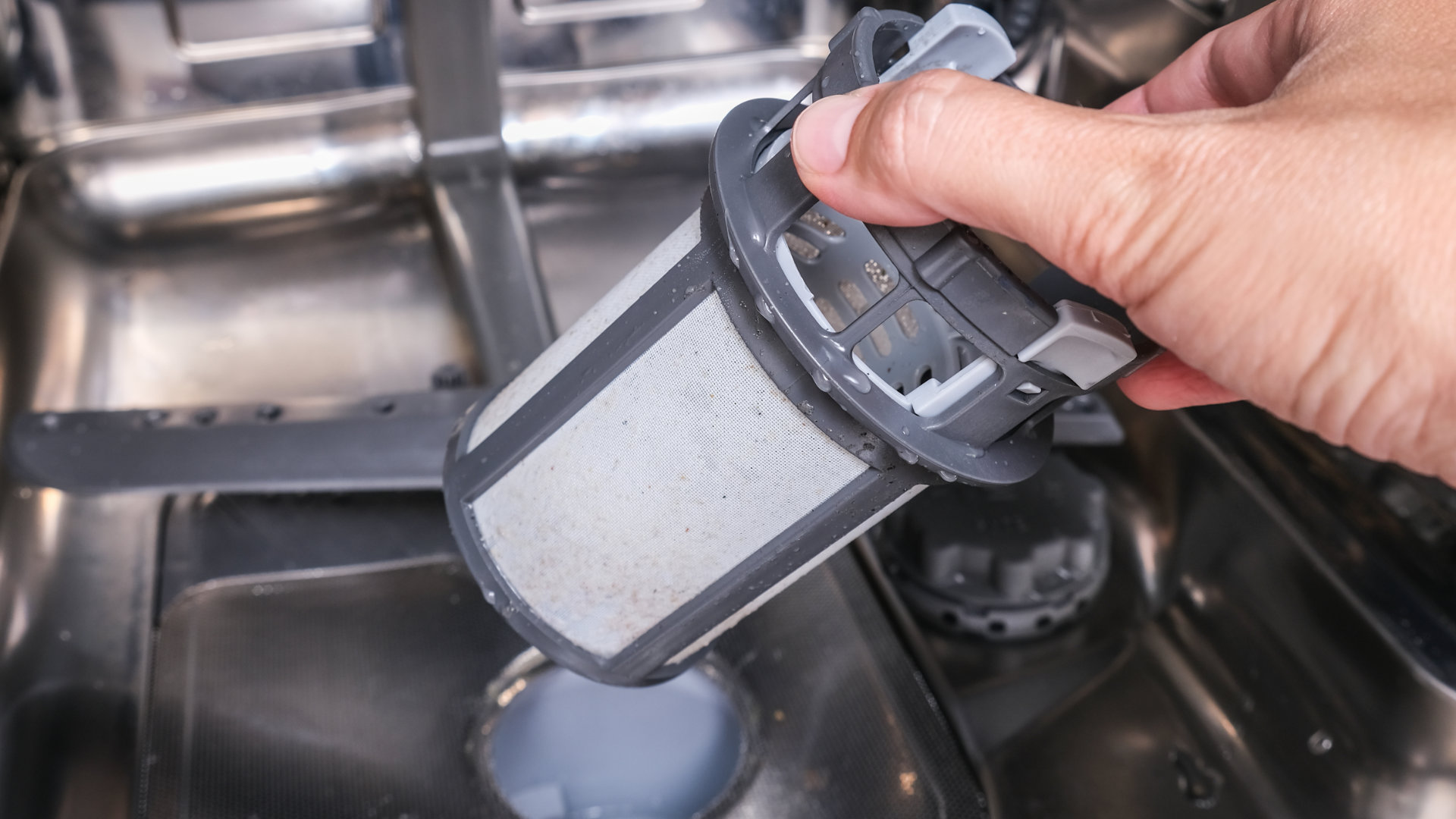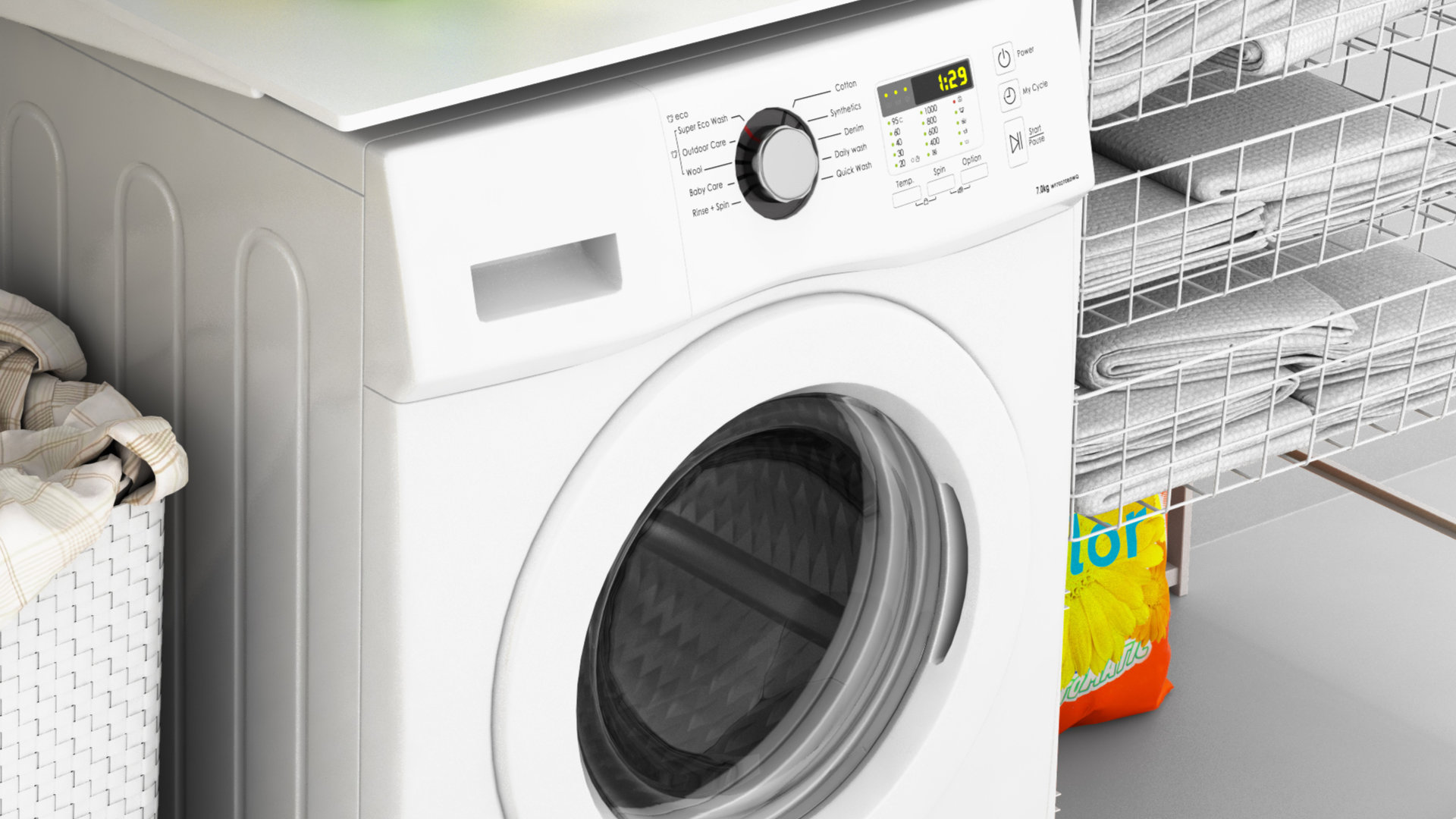
A tightly sealed dishwasher door stops water from seeping out of your appliance and onto your kitchen floor. In order for the door to create that watertight seal, the gasket and door hinges must function properly. Oftentimes, a dishwasher door that doesn’t generate an impenetrable seal is linked to a torn gasket, although this is frequently the case, damaged door hinges are also a possible culprit. If your Frigidaire dishwasher model FGID2466QF door is difficult to close or looks crooked when it’s shut, one or both of the door hinges are likely damaged. Luckily, swapping out the hinges for new ones is a fairly easy repair project and shouldn’t take you more than a few hours.
Required Tool
- Phillips Screwdriver
- T25 Torx Bit
- 5/8th Wrench
- 5/16th Nut Driver
- Pliers
Dishwasher Repair Safety Measures
- All dishwasher repairs should begin with unplugging the appliance and turning off its water source.
- During the repair you’ll be dealing with sharp edged objects, meaning you need to protect yourself by wearing work gloves and safety goggles.
- If you run into any issues during your dishwasher repair, and you no longer feel comfortable finishing the project, please stop what you’re doing and contact an appliance repair technician to complete the job.
How to Replace a Broken Door Hinge in Your Dishwasher
- Head underneath your sink to disconnect the dishwasher hot water fill line and the appliance’s drain hose. To detach the fill line, use a 5/8th Wrench to loosen its connection to the water valve, and then pull the line off the valve. Your dishwasher drain hose runs to either the garbage disposal, or your sink’s air gap. In order to detach the hose, you’ll need to use a 5/16th nut driver to loosen the hose’s clamp. Once the clamp is undone, simply pull the drain hose off the garbage disposal or the air gap. A little bit of water may drip out of the fill line and the drain hose so have a rag nearby to clean up any puddles.
- Open up your dishwasher door and unthread the screws securing the dishwasher to your kitchen countertop. Then, use the door to pull the dishwasher a few inches forward. Once there is enough room to grab the appliance’s frame, do so, and then continue to pull the dishwasher out until the front half of the appliance is no longer under the counter.
- Now open the dishwasher door all the way and start taking off its front panel by unthreading the two lower screws on the doors inside panel. After you’ve taken the screws out, close the appliance door and pull the front panel off the dishwasher.
- With the front panel out of the way, you can take off the damaged door hinge or hinges. To do so, unhook the door spring that runs between the hinge and the dishwasher frame. Then, using your T25 Torx bit, unthread the two screws securing the hinge to the dishwasher. Next, you’ll need to remove the hinge’s shoulder bolt. Using a pair of pliers, hold the rod that connects the right and left shoulder bolts, and then loosen and remove the bolt with your T25 Torx bit. Now that you have detached the bolt, you can pull the broken hinge off your dishwasher. At this point, if the appliance’s second hinge is also damaged and needs to be removed, repeat the same steps on the other side of the door.
- When you take the hinges out of the box, look for the marks that indicate which hinge belongs on the left side and which one belongs on the right side. Once you’ve established the correct placement of the hinges, you can start the installation process.
- Align the hinge’s two screw holes with the screw holes on the dishwasher frame, and then insert the screws that secure the hinge to the frame and tighten them with your T25 Torx bit. Next, line up the rod that runs in-between the shoulder bolts. Then, insert the bolt and secure it by holding the rod with pliers and tightening the bolt with your T25 Torx. To finish off installing the first hinge, reattach the door spring by hooking it onto the hinge and dishwasher frame. If you are replacing the second hinge, repeat the same steps on the other side of your appliance.
- Now it’s time to start reassembling your dishwasher. First, you’ll want to reinstall the appliance’s front panel. To do so, grab the panel and align the top of the panel with the mounting slots on the dishwasher. Once they’re lined up, push the bottom of the panel in to partially secure it. Next, open the appliance door and replace the screws that hold the front panel to the dishwasher.
- Head underneath the sink and pull the fill line, drain hose and appliance power cord further into the cabinet. Then, stand-up and push the dishwasher back under the kitchen counter.
- After the dishwasher is in its proper place, once again, go underneath the sink and reconnect the fill line and the drain hose. To connect the drain hose, simple slide the hose onto the air gap or garbage disposal and tighten the clamp that secures it. Next, reattach the fill line to the hot water valve, and rethread the bolt that holds the line in place.
- The last step in reassembling your dishwasher is reattaching the screws that hold your appliance to the kitchen counter.
- With your dishwasher put back together and secured underneath your cabinets, plug your appliance back in and turn on its water supply. The next time you run a wash cycle, check the area around the dishwasher door to ensure the new hinges fixed your appliance’s leak.
Allowing a leaky dishwasher to persist can lead to more expensive repairs not only for your dishwasher, but also for your kitchen floor and kitchen cabinets. If you’ve noticed water puddling under or in front of your appliance, please contact us today and one of our highly trained dishwasher repair technicians will happily diagnose and fix the malfunction before it causes further damage.

How to Reset a Whirlpool Refrigerator Ice Maker

6 Reasons Your LG Refrigerator Is Not Making Ice

Kenmore Fridge Ice Maker Not Working? 5 Ways to Fix It

How to Remove Fish Smell from Your Refrigerator

How To Fix Bosch Dishwasher E24 Error

Troubleshooting a Whirlpool Dishwasher Not Draining

Why Is Your Fridge Water Not Working, but Ice Is?

How to Fix the E15 Bosch Dishwasher Error Code

How Much Power Does a Microwave Use?

How to Properly Clean Refrigerator Coils

How to Fix an LG Washer Showing OE Error Code

Troubleshooting a GE Dishwasher with No Power and No Lights

10 Reasons Why Your Bosch Dishwasher Won’t Start

Troubleshooting the F5 Error Code with a Maytag Washer


